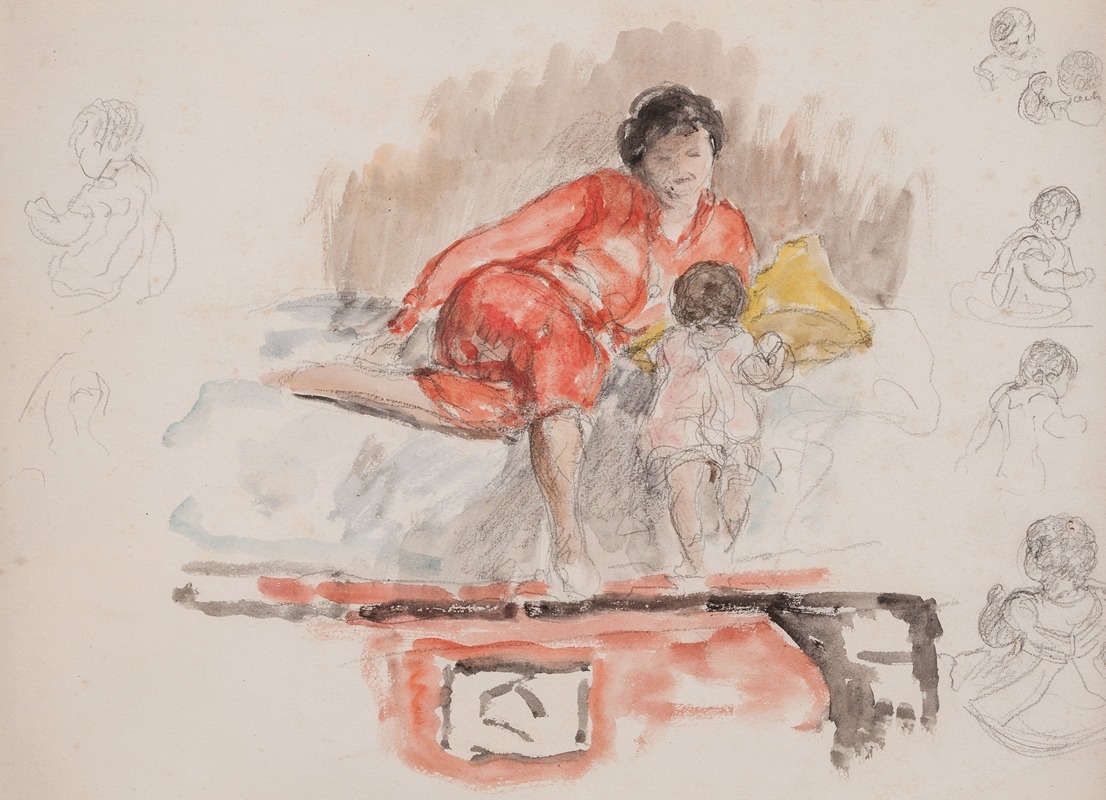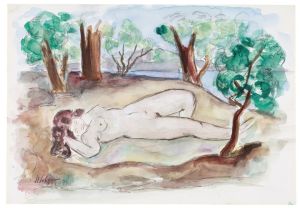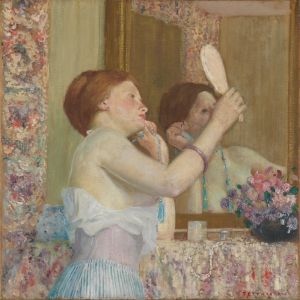
Study of Mother and Child
A hand-painted replica of Henri Lebasque’s masterpiece Study of Mother and Child, meticulously crafted by professional artists to capture the true essence of the original. Each piece is created with museum-quality canvas and rare mineral pigments, carefully painted by experienced artists with delicate brushstrokes and rich, layered colors to perfectly recreate the texture of the original artwork. Unlike machine-printed reproductions, this hand-painted version brings the painting to life, infused with the artist’s emotions and skill in every stroke. Whether for personal collection or home decoration, it instantly elevates the artistic atmosphere of any space.
Henri Lebasque (1865–1937) was a French post-impressionist painter known for his use of light and color, often depicting scenes of domestic life and leisure. One of his notable works is "Study of Mother and Child," which exemplifies his style and thematic focus on intimate family moments.
Lebasque was born in Champigné, France, and began his artistic education at the École des Beaux-Arts in Paris. He was influenced by the Impressionists and later by the Fauves, which is evident in his vibrant color palette and loose brushwork. Throughout his career, Lebasque was associated with several prominent artists, including Pierre Bonnard and Édouard Vuillard, and was a founding member of the Salon d'Automne, an exhibition that played a significant role in the development of modern art in France.
"Study of Mother and Child" is a testament to Lebasque's ability to capture the tenderness and warmth of familial relationships. The painting typically features a mother and her child in a serene setting, often bathed in natural light that enhances the emotional connection between the figures. Lebasque's use of color is particularly noteworthy; he employs soft, harmonious tones that create a sense of tranquility and intimacy. The composition is carefully balanced, with the figures often positioned in a way that draws the viewer's eye to the interaction between mother and child.
Lebasque's focus on domestic scenes was part of a broader trend among post-impressionist artists who sought to depict everyday life with a sense of immediacy and authenticity. His work is characterized by a gentle, lyrical quality that sets it apart from the more dramatic or avant-garde approaches of some of his contemporaries. Instead of focusing on the bustling urban scenes or the stark landscapes favored by other artists of the time, Lebasque found inspiration in the quiet moments of family life.
The "Study of Mother and Child" reflects Lebasque's interest in the themes of motherhood and childhood, which were central to his oeuvre. These themes resonate with the broader cultural context of the late 19th and early 20th centuries, a period that saw significant changes in the perception of family and domestic life. Lebasque's paintings often evoke a sense of nostalgia and idealism, capturing the innocence and purity of childhood and the nurturing role of the mother.
Lebasque's work, including "Study of Mother and Child," has been exhibited in numerous galleries and museums worldwide, contributing to his reputation as a significant figure in the post-impressionist movement. His paintings continue to be celebrated for their beauty, emotional depth, and technical skill, offering viewers a glimpse into the intimate world of family life through the eyes of a masterful artist.
In summary, Henri Lebasque's "Study of Mother and Child" is a poignant example of his artistic vision, characterized by its focus on light, color, and the tender moments of everyday life. Through this work, Lebasque invites viewers to appreciate the simple yet profound connections that define human relationships, rendered with a sensitivity and grace that remain timeless.

















![Untitled [Mother and child]](/imgs/260873/s/frances-hodgkins-untitled-mother-and-child-e53a1b.jpg)
